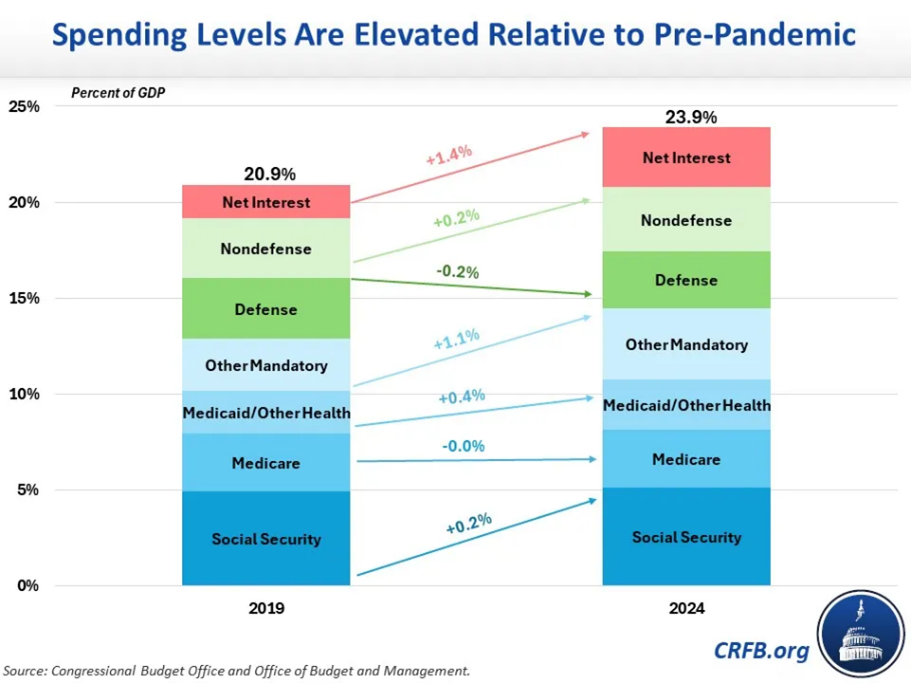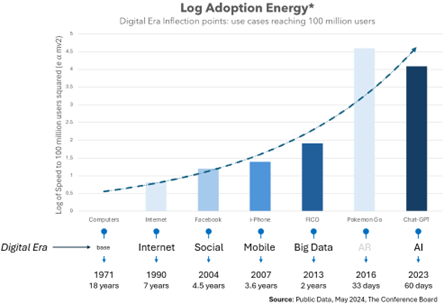Thought of the Week:
My father-in-law was a great storyteller. He didn’t need to be. He was an accomplished ophthalmologist, an eye surgeon, who specialized in cataract surgery. His patients spanned the gamut of Maryland society—professional athletes, Hollywood entertainers, politicians, schoolteachers, and stevedores. He was the first in the U.S. to learn and perform a new surgical technique—radial keratotomy, the precursor to LASIK (his trip to Russia, at the height of the Cold War, early in his career to learn the technique is a great story; remind me to tell it to you some time). And a specialized surgical technique and tool, still in use today, carries the family name—the Katzen LASIK Flap “Unzipper.” It didn’t matter whether his stories were true, contained half-truths, were an amalgamation of various tales rolled into one, or were even entirely made up. They were engaging, entertaining, insightful, and thought provoking. And he had this knack for making you feel like he was letting you in on a secret, even when you knew deep down he had probably told the same story a million times over. Somehow, in that brief period of storytelling, you felt like the two of you were really connecting—it was like he was trusting you with newfound information to do what you wanted with it. Storytelling and lobbying really aren’t all that different. In fact, in lobbying, often the most effective way to get what you want taken up is by telling a story; it’s the story that captures attention and persuades. Typically, the decisionmakers—members of Congress and congressional staff—lobbyists meet with are not experts on the policy or issue in question. In fact, they may not even be familiar with the issue at all. In this case, burying the lead in reams of data, slide decks, and/or academic studies is the best way to get your issue sidelined. While hard data may have its place down the line, it’s not appropriate for a lobbying meeting. Such meetings are short, often just 15 to 30 minutes, and there’s just not much time to get those sitting across the table from you to sit up, take notice, listen, and peak their continued interest. Behind you is literally a lobby full of advocates waiting to pitch their own issues. In my experience the best stories are based in reality, contain a hook—an item that not only captures attention but keeps the audience engaged—include no more than three relevant points, deliver an “ask,” and conclude with a recommended solution and offer to reengage. Before concluding, I’d be remiss if I didn’t at least mention last night’s debate between President Biden and former President Trump. It goes without saying that a lot of opinions are being thrown around regarding the content and delivery of their messages. Looking through the lens of storytelling, neither candidate has the speaking eloquence of a President Obama; the camera savvy of the “Great Communicator”, President Reagan; the ability of President Clinton to make you feel like you are the only person in the room; or President George W. Bush’s ability to lasso you into his friend group. The truth is that most Americans don’t want either of these candidates to be the next president. Beyond the questions the moderators ask, the canned one-liners and sound bites the candidates are sure to deliver, and even the policy prescriptions each side may offer, what may move me in one direction or the other is who delivers the best story for the next four years.
Thought Leadership from our Consultants, Think Tanks, and Trade Associations
Bloomberg Government Reports on Lobbyists Helping CEOs Navigate Hill Hearings. It’s been a bruising Congress for CEOs testifying on Capitol Hill. As lawmakers look to put a spotlight on tech, pharmaceuticals, aviation, and other industries, preparing business leaders for Hill testimony is a growing part of a lobbyist’s job. While some probes are bipartisan, many business executives’ appearances on Capitol Hill are designed for lawmakers to showcase campaign talking points. The Democratic-controlled Senate has been a hub of CEO testimony this Congress, while the GOP-led House, playing to its party’s base, has focused on university leaders and probes of President Biden, his administration, and family. Testifying before Congress poses a high-risk situation for leaders of corporations and other organizations. Regardless of the reason behind the investigation, appearances at hearings need to be taken seriously—just ask the university presidents forced out of their jobs after making House appearances. While Democrats focus on big business, the GOP is no longer offering deference to CEOs. In fact, the populist wing of the Republican Party has no problem calling CEOs and holding them to account. Although Republicans are still more aligned with business and their concerns over taxes and regulation, there is more than a fair share of Republicans skeptical of corporate power. Lobbyists say the rise in high-profile hearings and congressional investigations has been a decade in the making. Gridlock on Capitol Hill and populism in both parties has fueled anti-corporate messaging to the point where the populist right and socialist left have bonded over distrust of big corporations. The shift has changed lobbyists’ work across industries. Once just focused on legislation or regulation, reputation management has become nearly as important.
NAM’s Outlook Survey Reveals a Failure to Stop Tax Hikes May Devastate Industry. If Congress does not stop impending tax increases, manufacturers and the larger U.S. economy will feel the pinch, according to NAM’s Q2 2024 Outlook Survey. NAM’s most recent survey of manufacturers, conducted this quarter from May 14 to June 3, places a spotlight on the criticality of Congress moving to “prevent tax increases that will limit industry’s ability to create jobs, support communities, and compete in the global economy.” The tax hikes would primarily come in the form of expiring pro-growth tax provisions scheduled for the end of 2025. In response, the NAM launched its “Manufacturing Wins” campaign to extend the provisions. Among the key findings and takeaways from the survey are: (1) 73% of manufacturers say congressional failure to stop the tax increases will limit their capital investment opportunities; (2) 94% agree that Congress should move to prevent the increases before the end of next year; and (3) just 72% feel positive or somewhat positive about their companies’ futures, the seventh consecutive reading to come in under the moving average of 74.8%. NAM’s conclusion is that if Congress does not take immediate action, not only will job creation, wage growth, and investments in communities be placed at risk, but so will the country’s ability to attract meaningful foreign direct investment.
Observatory Group’s Take on the Federal Reserve’s Likely Policy Guidance. The Fed expects that its next rate cut will be the start of a full normalization cycle that will take well over a year to complete. However, the rate-cutting cycles of the last 20 years will not provide a road map for current FOMC policy guidance. This is because the dramatic rate cuts prompted by the Global Financial Crisis and the pandemic economic shutdown were the direct opposite of normalization cycles. What’s more, Chairman Powell has an aversion to quantitative economic threshold guidance—it constrains the flexibility and discretion he would like the Fed to retain. From the central bank’s view, policy projection dots will serve as guidance and offer clues to the pace of the easing cycle. Overall, expect FOMC guidance to remain qualitatively data driven. Regardless, once the cuts become a reality—either because they have started or because the FOMC has signaled they are near—expect any guidance to refer to “gradual” policy normalization, if not in those exact words, then with the same meaning. While companies should not expect any additional specificity in the FOMC statement itself, the FOMC will manage assumption as necessary.
“Inside Baseball”
When President Biden and former President Trump face off against each other in Thursday’s debate, they will be both the most experienced and rustiest debaters ever to tangle on the presidential stage. Between them, they have 47 debates—31 for Biden, starting in 1988, and 16 for Trump, mostly in 2016. However, neither has taken a debate stage since October 2020. This is an unprecedented gap between debates for the two parties’ nominees, and it introduces an element of uncertainty into the showdown.
In Other Words
“We Democrats have done a terrible job in actually talking about immigration,”
Rep. Ramirez (D-IL) on the formation of a “Caucus on Global Migration” that will try to shift the immigration debate away from the southern border and toward root causes; the new caucus reflects Democratic division over immigration.
Did You Know
Federal spending this year will be the largest it’s ever been outside of a crisis—far exceeding pre-pandemic levels. According to the CBO’s latest projections, spending has grown from 20.9% of GDP in FY 2019 to an estimated 23.9% of GDP in 2024.

Graph of the Week
AI’s Unprecedented Pace of Change. In 500 BC, the Greek philosopher Heraclitus noticed that the “only constant in life is change.” While the statement remains true today, the pace of change has accelerated tremendously since the time of ancient Greece. The chart below is a logarithmic scale of the energy released in getting to 100 million users for each ‘era’ of digital transformation—18 years for desktop computers to 33 days for Pokémon GO. The increasing pace of change in the technology sphere is exponentially faster today than anything we have had to deal with in the past. In fact, it may be time to accept that as soon as one instance of AI is deployed, new tools have already emerged. Business teams—and corporate leadership—need to be prepared to deal with this new reality in order to avoid burnout and frustration.
